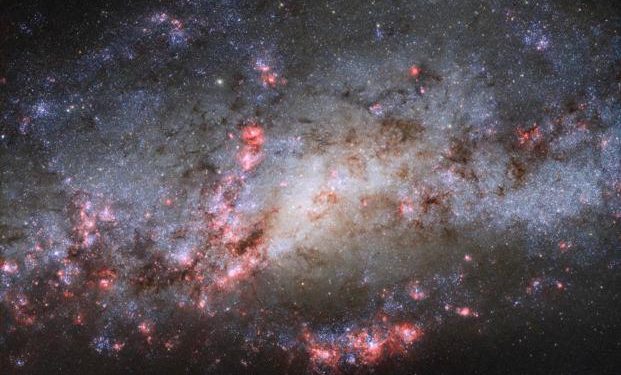New York: A team of astronomers have found the reason why early, massive galaxies turn inactive is because they run out of the cold hydrogen gas needed to make stars.
Star formation is one of the key ways that galaxies grow, and they’re said to have gone quiescent when they cease forming stars.
Using NASA’s Hubble Space Telescope and the Atacama Large Millimeter/submillimeter Array (ALMA) in northern Chile, the team from the University of Massachusetts, Amherst detected six such massive galaxies that were dead.
While astronomers have known that early, massive galaxies turn quiescent, but until now, no one knew why.
“The most massive galaxies in our universe formed incredibly early, just after the Big Bang happened, 14 billion years ago,” said Kate Whitaker, Assistant Professor of astronomy at the University of Massachusetts, Amherst.
“But for some reason, they have shut down. They’re no longer forming new stars,” she added.
Her team explored what happened to all the cold gas in these galaxies so early on.
Hubble pinpointed where in the galaxies the stars exist, showing where they formed in the past. By detecting the cold dust that serves as a proxy for the cold hydrogen gas, ALMA showed astronomers where stars could form in the future if enough fuel were present.
The findings are published in the journal Nature.
These six galaxies lived fast and furious lives, creating their stars in a remarkably short time. Why they shut down star formation so early is still a puzzle.
Whitaker proposes several possible explanations: “Did a supermassive black hole in the galaxy’s center turn on and heat up all the gas? If so, the gas could still be there, but now it’s hot. Or it could have been expelled and now it’s being prevented from accreting back onto the galaxy. Or did the galaxy just use it all up, and the supply is cut off? These are some of the open questions that we’ll continue to explore with new observations down the road.”
Further, the team stated that these sorts of dead galaxies don’t appear to rejuvenate, even through later minor mergers and accretions of nearby, small galaxies and gas. Gobbling up things around them mostly just “puffs up” the galaxies.
If star formation does turn back on, Whitaker described it as “a kind of a frosting”.
About 11 billion years later in the present-day universe, these formerly compact galaxies are thought to have evolved to be larger but are still dead in terms of any new star formation.






































